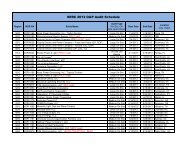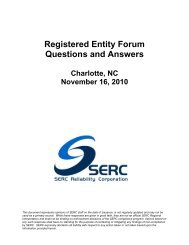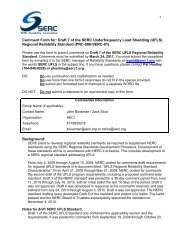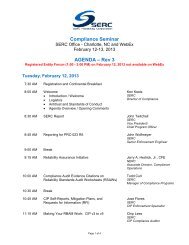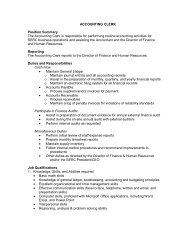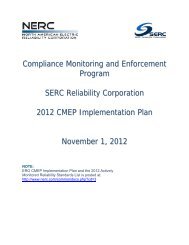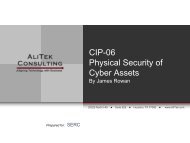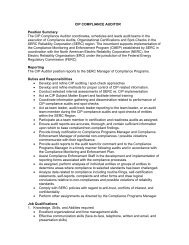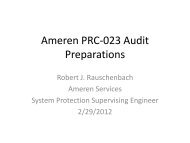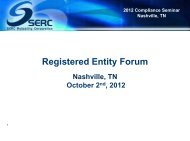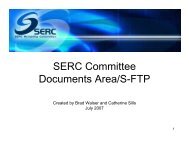RealityCharting e-book .pdf - SERC Home Page
RealityCharting e-book .pdf - SERC Home Page
RealityCharting e-book .pdf - SERC Home Page
- No tags were found...
Create successful ePaper yourself
Turn your PDF publications into a flip-book with our unique Google optimized e-Paper software.
158<br />
Facilitation Skills<br />
know.” Sometimes the discussion leads to asking interviewees if they have<br />
any ideas how to find the answer. “I wonder who does know about that”<br />
“Do you know anyone who might help us” is a possible line of questions.<br />
Use follow-up questions to help focus the interview on a specific cause<br />
path, such as, “And that would mean. . .” or “So what does that tell us<br />
about the causes” “I don’t understand; could you please elaborate” is<br />
another good question to keep the thought process going. This helps<br />
build the interviewee’s confidence that they are doing the right thing and<br />
are needed.<br />
Maintain eye contact as much as possible to pick up on body<br />
language. If you are not skilled in reading body language, start learning<br />
or ask someone else to perform the interview. Eye contact is acceptable<br />
in most Western cultures but may be rude or even dangerous in some<br />
cultures.<br />
Be enthusiastic about answers if the interviewee provides new<br />
insights. Do not be phony in this endeavor, but let interviewees know<br />
they are being helpful. Restate information by paraphrasing. This helps<br />
understanding. A good paraphrase should include a summary of the<br />
essential words (key nouns and verbs, not the modifiers), the emotional<br />
level from which the statements are made, and what value the interviewee<br />
places on them.<br />
Avoid criticizing, complaining, or comparing and ask the interviewees<br />
to do the same if you catch them doing it. When responding to questions,<br />
use “I” not “we,” “them,” and “us” as this sets up a perception of different<br />
camps and can cause the interviewee to choose sides.<br />
Take good notes or ask someone else to take notes while you do the<br />
interview. If you have a note taker, make sure you explain this function at<br />
the beginning of the interview.<br />
Using “dead air” or an extended pause after a question often forces<br />
the interviewee to think more deeply about the question. We do not like<br />
dead air and hence feel a need to fill it with something. What may seem<br />
like a long time, often is not when things are quiet. This takes practice and<br />
doesn’t always work, so use it according to your skills and the need to get<br />
the conversation going.<br />
Closing the Interview<br />
When the questions subside and there appears to be nothing more<br />
to learn, it is time to close the interview. A good question at the end of<br />
the interview is, “What would you do differently” or “If you had a million<br />
dollars to spend on this problem, what would you do”



